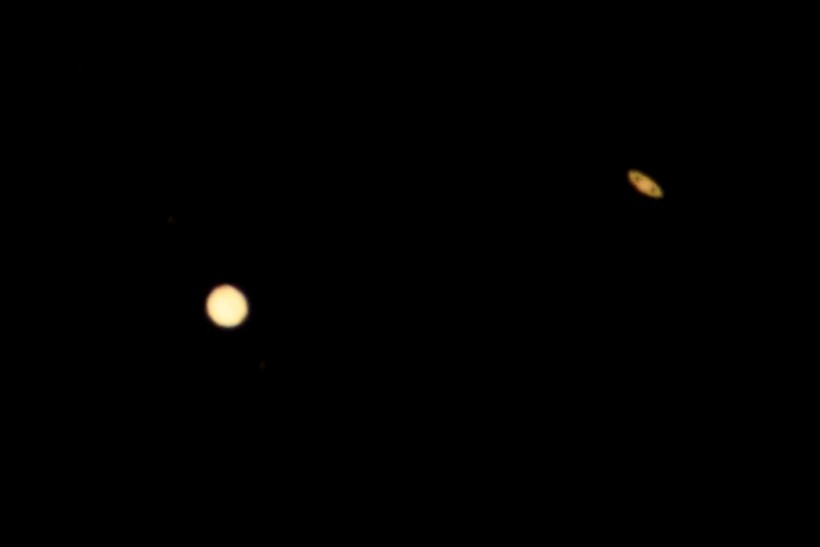Researchers investigated a theory that implies Jupiter's moon Europa may be habitable if radiolytic oxidants created at its surface move efficiently through the ice by creating the world's first physics-based computer simulation.
Europa, Jupiter's moon, is believed to have an ocean beneath its ice shell. The availability of redox gradients determines the habitability of the interior ocean.
According to the hypotheses, saltwater beneath Jupiter's moon Europa's icy crust might be carrying oxygen into an ice-covered ocean of liquid water. It could be able to support life there.
Researchers published the study, "Downward Oxidant Transport Through Europa's Ice Shell by Density-Driven Brine Percolation," in the journal Geophysical Research Letters.

TOPSHOT - Planets Jupiter (L) and Saturn are seen during the great conjunction from the Griffith Observatory on the same day as the winter solstice, December 21, 2020 in Los Angeles, California. - The great conjunction refers to the astronomical alignment of Jupiter and Saturn, the closest for nearly 400 years.
Jupiter Moon Europa Brings Oxygen To Oceans
Scientists from the University of Texas in Austin tested the notions by creating simulations of the process with oxygen rising on seawater under the moon's "chaos terrains." A fifth of the cold planet is covered in chaotic terrains, which are landscapes of fractures, ridges, and ice blocks.
The possibility of oxygen transport is demonstrated in the simulation. Scientists also discovered that the amount of oxygen introduced into Europa's water could be comparable to that found in Earth's seas today.
Lead researcher Marc Hesse, a professor at the UT Jackson School of Geosciences Department of Geological Sciences, said in a Science Daily post that the recent finding solves one of the major difficulties with the Europa subsurface ocean's habitability.
Europa's ice shell is thought to be around 15 kilometers thick. The shell serves as a barrier between water and oxygen, produced by sunlight and charged particles impacting Jupiter's frozen surface.
ALSO READ: NASA Juno Spacecraft Shares Jaw-Dropping Photo of Jupiter's Moons Io and Europa [LOOK]
Is it true that there is life in the sea? If that's the case, oxygen should be able to get to it. Hesse believes that the oxygen is delivered by saline water or brine, which is a realistic theory based on the facts.
The chaotic terrains, according to experts, are the surface regions where Europa's ice cover partially melts to generate saltwater. This brine can combine with oxygen from the atmosphere.
The new model demonstrated what happens to the brine when the Chaos terrain is formed and how the brine drains in a unique way. It takes the shape of a porosity wave, which causes the pores in the ice to enlarge for a brief duration, enabling the brine to pass through before shutting up again.
This method efficiently transports oxygen through the ice. About 86 percent of the oxygen consumed at the surface is carried to the ocean by the wave.
Europa's Water Same To Those in Earth's Seas
Steven Vance, a research scientist at NASA's Jet Propulsion Laboratory (JPL) said in a statement that the highest estimate would bring the oxygen levels in Europa's ocean closer to those found in Earth's seas, raising hopes for the hidden sea's ability to host life.
Kevin Hand, a scientist at NASA JPL who focuses on Europa research and is not involved in the study, added that the work gives a credible explanation for oxygen transport on Europa.
Researchers accept that Europa possesses helpful molecules on its top, such as oxygen, but do such compounds make it down into the ocean below, where life can use them? The answer appears to be yes in the work of Hesse and his partners.
RELATED ARTICLE: NASA Juno Spacecraft Spots Meteor Hitting Through Jupiter Skies
Check out more news and information on Space in Science Times.














